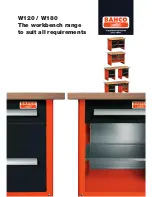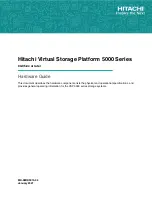
Backup/archive software and method
Each backup method has its own impact on performance, depending on how well it can keep data streaming
to the tape drive. In most cases, native applications do not have the features required to maximize
performance for LTO tape drives. Hewlett Packard Enterprise recommends using a full-featured backup or
archive application with this library.
File-by-file backup or archive methods provide the best restore performance if you only need to restore
individual files. However, if the average file size is small, file-by-file methods will significantly reduce
performance.
Disk image, flash, or sequential backup methods provide the fastest performance because they back up an
entire disk, partition, or LUN, which minimizes disk seeking. The disadvantage is that backup and restore
operations work on an entire disk, partition, or LUN. You might not be able to back up a subset of files or
restore a single file. If you can restore a single file, the restore process will be slow.
Database backup performance will vary based on the use model. To improve performance when backing up
data from a database:
• Use specific backup agents for the database.
• Use the latest versions of the databases.
• Do not back up individual mailboxes.
• Do not back up specific records or do a record-by-record backup.
• Do not back up when the database is in heavy use.
Connection from the archive/backup host server to the library
For the best performance, the connection from the host server to the library must have enough bandwidth to
provide enough data to keep the tape drive streaming. Current LTO tape drives take advantage of some of
the fastest interfaces available so the type of interface used to connect the library to the host server is not
likely to be the cause of a performance issue. However, issues with cables and connectors can limit
performance.
Verify that the system is using cables that are listed in the QuickSpecs, are in good condition, and do not
exceed recommended cable lengths.
Data cartridges
The type and condition of the data cartridges also affect backup performance. For best performance, use
Hewlett Packard Enterprise cartridges that are the same LTO generation as the tape drives. If you suspect a
performance issue related to data cartridges, use the L&TT media assessment test to evaluate the condition
of the data cartridges.
Tape drive read or write performance seems slow
Symptom
Tape drive read or write is slower than expected.
Cause
If the tape drive is not properly secured to the chassis or the library is not properly secured to the rack,
vibration may cause slow read or write performance. Vibration could come from the cooling fan or external
sources.
Backup/archive software and method
161
















































